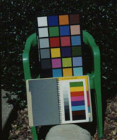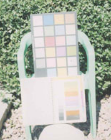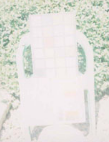Let me clarify or rather correct something here. The above scans were done at exactly the same settings on the scanner with no correction.
Here are some others. They are scans of prints of the above negatives which were scanned. The prints had a constant filtration and exposure time but varied only in f stop. Do you see a significant shift in color or any color error? Color neg maintains its balance from the toe to the shoulder. at the extremes, some shadow or highlight detail is lost. But the good range is pretty broad. I've done the same with Portra 400.
PE
Thanks for posting these examples PE. It's very interesting to see side-by-side examples. Looking at these prints makes me wonder whether the colour shifts I experienced with my 2 stop over-exposed Ektar was simply caused by the scanner having problems with the density of the negative. Trying to think back, but I can't recall wet printing any of them. I need to revisit those negatives when I finally have my darkroom set up again. Perhaps I've had the wrong idea about Ektar all this time?














